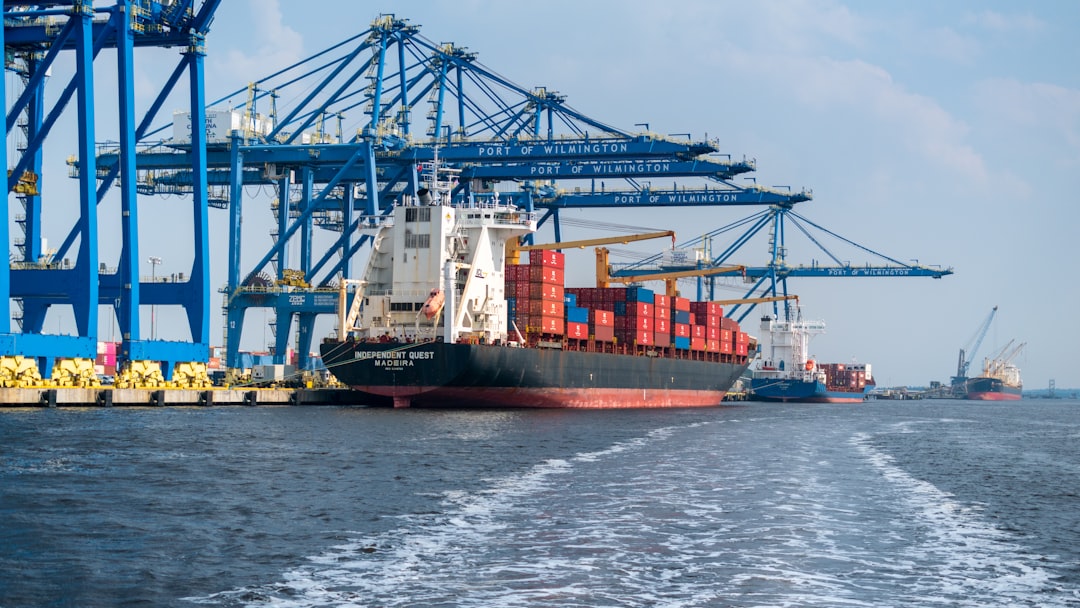In today’s globally interconnected world, efficient logistics are no longer a luxury but a necessity for businesses of all sizes. Successfully navigating the complexities of moving goods requires a deep understanding of both maritime and land logistics, and a strategic approach to seamlessly integrating the two. This post delves into the key strategies for optimizing your supply chain, ensuring timely and cost-effective delivery of your products.
1. Optimizing Port Operations for Efficient Maritime Logistics
The port is the crucial nexus between maritime and land-based transportation. Optimizing port operations is paramount for smooth logistics. This involves several key aspects:
- Strategic Port Selection: Choosing the right port based on factors like proximity to your target market, infrastructure capabilities (cranes, storage facilities), and handling fees is critical. Consider factors like congestion levels and potential delays.
- Container Management: Efficient container handling, including tracking, loading, and unloading, is vital. Implementing technology like RFID tracking can significantly improve visibility and reduce delays.
- Collaboration with Port Authorities: Building strong relationships with port authorities allows for smoother customs clearance processes and proactive problem-solving. Understanding port regulations and procedures is essential.
- Intermodal Connectivity: Seamless integration between ships, trains, and trucks at the port is crucial. Investing in infrastructure and technology that supports intermodal transportation is key to minimizing delays and optimizing costs.
2. Streamlining Land Transportation: From Port to Customer
Once goods arrive at the port, efficient land transportation is critical for timely delivery. This phase involves several crucial elements:
- Choosing the Right Mode of Transport: Selecting the optimal mode of transport (truck, rail, or a combination) depends on factors like distance, cost, delivery speed, and the nature of the goods. Truck transportation offers flexibility, while rail is often more cost-effective for long distances.
- Route Optimization: Utilizing route planning software and GPS tracking can help minimize travel time and fuel consumption. Real-time traffic updates are essential for avoiding congestion and delays.
- Warehouse Management: Efficient warehouse operations, including inventory management and order fulfillment, are critical for quick turnaround times. Implementing warehouse management systems (WMS) can streamline processes and improve efficiency.
- Last-Mile Delivery Optimization: The final leg of the journey, last-mile delivery, often presents significant challenges. Strategies like route optimization, delivery scheduling, and alternative delivery options (e.g., lockers, click-and-collect) can improve efficiency and customer satisfaction.
3. Integrating Technology for Enhanced Visibility and Control
Technology plays a crucial role in modern logistics. Integrating various technologies can significantly improve visibility, control, and efficiency across both maritime and land operations:
- Transportation Management Systems (TMS): TMS software provides a centralized platform for managing all aspects of transportation, from planning and execution to tracking and reporting.
- Global Positioning System (GPS) Tracking: Real-time tracking of shipments provides valuable insights into location, speed, and potential delays, enabling proactive intervention.
- Electronic Data Interchange (EDI): EDI streamlines communication between different stakeholders, such as shippers, carriers, and customs authorities, reducing paperwork and improving efficiency.
- Blockchain Technology: Blockchain can enhance transparency and security by providing an immutable record of all transactions and movements throughout the supply chain.
4. Building Strong Partnerships for Collaborative Logistics
Successful logistics requires collaboration across multiple stakeholders. Building strong partnerships with key players is crucial for efficient and reliable operations:
- Freight Forwarders: Freight forwarders act as intermediaries, managing the complexities of international shipping and customs clearance.
- Shipping Lines: Selecting reliable shipping lines with robust schedules and efficient operations is essential for maritime transportation.
- Third-Party Logistics Providers (3PLs): 3PLs can provide a range of services, including warehousing, transportation, and order fulfillment, freeing up internal resources.
- Customs Brokers: Customs brokers navigate the complexities of international trade regulations, ensuring smooth customs clearance processes.
5. Risk Management and Contingency Planning in Maritime and Land Logistics
Unforeseen events, such as natural disasters, political instability, or port congestion, can significantly disrupt logistics operations. Proactive risk management and contingency planning are essential for mitigating these risks:
- Identifying Potential Risks: Regularly assess potential risks across the entire supply chain, including geopolitical factors, weather patterns, and potential disruptions.
- Developing Contingency Plans: Create detailed plans for handling potential disruptions, including alternative transportation routes, backup suppliers, and emergency communication protocols.
- Insurance and Risk Mitigation Strategies: Secure appropriate insurance coverage to protect against potential losses. Implement strategies to mitigate risks, such as diversifying suppliers and transportation routes.
- Regular Monitoring and Review: Continuously monitor the supply chain for potential risks and regularly review and update contingency plans based on changing circumstances.
By implementing these strategies, businesses can significantly improve the efficiency, reliability, and cost-effectiveness of their maritime and land logistics operations. The key is to adopt a holistic approach, integrating all aspects of the supply chain to create a seamless and optimized flow of goods from origin to destination.
SEO Tags:
- Maritime Logistics
- Land Logistics
- Supply Chain Management
- Logistics Strategy
- Port Operations




